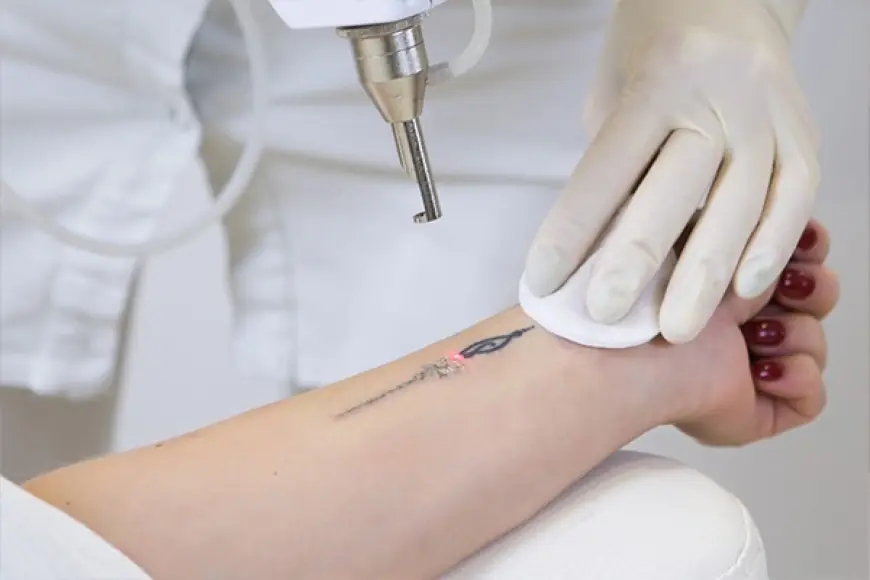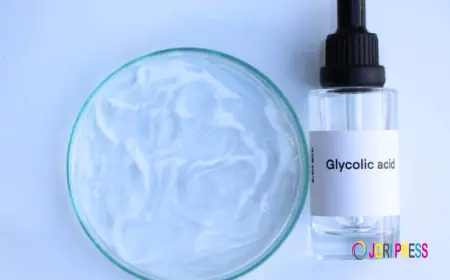Laser Tattoo Removal in Delhi – Safe & Effective
Tattoos are personal—and so is the decision to remove them. Whether it’s a faded design, a name from the past, or something you’ve simply outgrown, laser tattoo removal offers a safe and advanced way to clear the canvas. At Influennz Clinic, we provide US FDA-approved laser tattoo removal treatments designed to fade and eliminate unwanted tattoos with minimal discomfort and maximum precision.

Tattoos are personal—and so is the decision to remove them. Whether it’s a faded design, a name from the past, or something you’ve simply outgrown, laser tattoo removal offers a safe and advanced way to clear the canvas.
At Influennz Clinic, we provide US FDA-approved laser tattoo removal treatments designed to fade and eliminate unwanted tattoos with minimal discomfort and maximum precision.
What Is Laser Tattoo Removal?
Laser tattoo removal is a non-surgical procedure that uses high-intensity laser beams to break down the ink particles in your tattoo. These broken-down particles are then naturally cleared away by your body’s immune system over time.
Modern technologies like Q-switched Nd:YAG and Pico lasers allow us to treat tattoos of different colors, sizes, and depths—safely and effectively.
Common Reasons People Choose Tattoo Removal
-
A name or symbol that no longer holds meaning
-
Career or military requirements
-
Faded or poorly done tattoos
-
Change in personal style or life events
-
Cover-up preparation for a new design
No matter your reason, laser tattoo removal at Influennz offers a solution that’s gentle on your skin and tough on ink.
How Does It Work?
-
The laser targets the tattoo pigment
-
Ink particles absorb the light and shatter
-
Body's immune system removes the fragments naturally
-
Ink fades gradually over multiple sessions
Number of Sessions Required
Tattoo removal is a process—not a one-time session. On average, patients need:
-
5–10 sessions, spaced 6–8 weeks apart
-
Factors like tattoo age, size, ink color, and depth affect total sessions
-
Older or amateur tattoos often fade faster than newer or professional ones
What Types of Tattoos Can Be Treated?
At Influennz, we treat:
-
Black and colored tattoos
-
Amateur and professional tattoos
-
Eyebrow or cosmetic tattoos
-
Tattoos on any body part (arms, back, legs, neck, chest, etc.)
Is Laser Tattoo Removal Safe?
Yes! When performed by trained professionals using advanced technology, laser tattoo removal is safe and well-tolerated. At Influennz Clinic, we follow strict protocols to ensure:
-
Minimal risk of scarring or pigment changes
-
Comfort-focused sessions with cooling systems
-
Personalized treatment plans based on your skin and tattoo type
Benefits of Laser Tattoo Removal at Influennz
-
✅ FDA-approved laser machines
-
?⚕️ Experienced dermatologists and laser specialists
-
? Treats all skin types safely
-
? Custom session planning & recovery advice
-
? Free consultation and patch test available
? Call or WhatsApp us: 8368778208 / 9870395069
? Visit our Delhi clinic to start your tattoo removal journey.
Does It Hurt?
Most patients describe the sensation as similar to a rubber band snap or warm pinpricks. We use numbing cream and cooling devices to keep discomfort minimal.
The pain level is generally less than getting the tattoo done in the first place!
Aftercare Tips
Post-treatment care is crucial for proper healing:
-
Avoid sun exposure on the treated area
-
Apply prescribed ointments or soothing gels
-
Don’t scratch or pick scabs
-
Keep the area clean and dry for 24–48 hours
-
Follow all instructions from your dermatologist
Is Laser Tattoo Removal Worth It?
✔ Yes—if you're looking for a safe, professional way to clear unwanted ink without surgery or scarring.
✔ Yes—if you want to make room for new tattoos or start fresh.
At Influennz, we believe your skin should reflect who you are today—not just who you were.
Conclusion: Clean Slate, Confident Skin
Whether it’s regret, revision, or reinvention—laser tattoo removal gives you the freedom to rewrite your story.
At Influennz Clinic, we combine the latest technology with medical expertise to help you achieve clear, tattoo-free skin—safely, comfortably, and confidently.
What's Your Reaction?
 Like
0
Like
0
 Dislike
0
Dislike
0
 Love
0
Love
0
 Funny
0
Funny
0
 Angry
0
Angry
0
 Sad
0
Sad
0
 Wow
0
Wow
0





















































